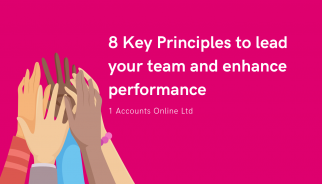With the changes in working practices COVID-19 has caused and the likelihood that many people will be working remotely for the foreseeable future, it is also worth considering how this impacts on the trainee experience and their supervision. To help with this, we have compiled some tips and ideas on how you can effectively supervise your trainee and continue to give them a meaningful learning experience whilst working remotely.
Part A: Supervising Trainees
Tip One – ‘drop in clinics’
A key element of the learning experience for a trainee is the ability to ask questions as they go along. When working alongside a supervisor and team, this is as simple as turning around and asking that question when it crops up. However, remote working can make this extremely difficult as you can’t see if someone is available to ask that question. Setting aside time each day (perhaps early morning and post lunch) for a 15 minute ‘clinic’ with your trainee gives them clear times (and permission) to call you with any questions they may have and not feel they are interrupting.
Tip Two – Break work down into smaller tasks
When allocating work to a trainee, depending on their level of experience, it may be beneficial to break the work down into smaller tasks. Rather than asking them to draft a recommendation, break the task down into firstly conducting the research, then discussing what they have learnt before finally producing their recommendation
Tip Three – New skills
Working remotely and social distancing has resulted in new ways of working that are likely to stay with us. These ways of working involve new skills (such as running virtual meetings, presenting live webinars and workshops, interpreting a client’s mood without being in the room with them, self discipline and time management) that will be essential for a trainee to develop (as well as the rest of us!). Ensuring that time is set aside to help a trainee develop these skills will help to enhance the learning experience. In addition, as many are already more tech savvy than some of us, they may also be able to teach us a thing or too!
Tip Four – Separate wellbeing catch ups and work-focussed meetings
Setting specific time aside to discuss the wellbeing of your trainee that is separate to the normal catch up to discuss progress against objectives and upcoming work will ensure that both are covered on a regular basis and gives your trainee permission to discuss non-work related matters that could impact them (and ultimately their performance).
Part B – Enhancing the trainee experience
Tip One – Encourage trainees to chat
They probably already have their own WhatsApp group and/or other means of staying in touch, but encouraging this from a learning (sharing experiences and ideas) as well as a wellbeing perspective adds value to the trainee experience.
Tip Two – Team meetings
As mentioned previously, running virtual meetings as well as presenting remotely are new skills that would be beneficial for trainees to develop. Consider how you can use team meetings as a safe place for your trainee to start developing these skills.
Tip Three – Project work
Either as an individual or as a cohort, giving your trainees a business-related (and real) project or projects they can work on and own not only enhances their experience as trainees but can also have a real benefit to your business.
Tip Four – Get their feedback
Whilst many firms traditionally bring their trainees together once (or twice a year) to get their feedback on experiences (as well as for additional learning, creating a sense of belonging etc.) you may wish to consider a more frequent feedback and idea collation mechanism that ensures current views are captured and your trainees feel listened to. You never know, they may come up with a suggestion that has real impact on your business!
For any additional advice on supervising and developing your trainees remotely, our team is on hand to help. If you have any thoughts on the above or any suggested additions to this advice we would be delighted to hear from you.







